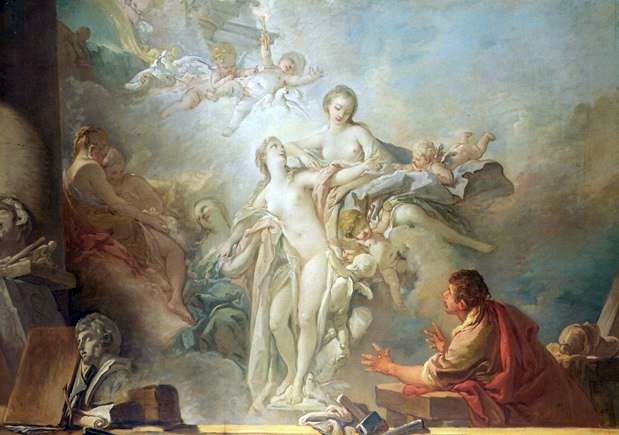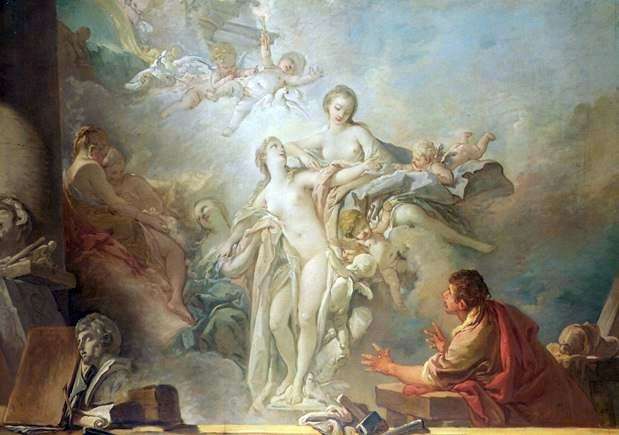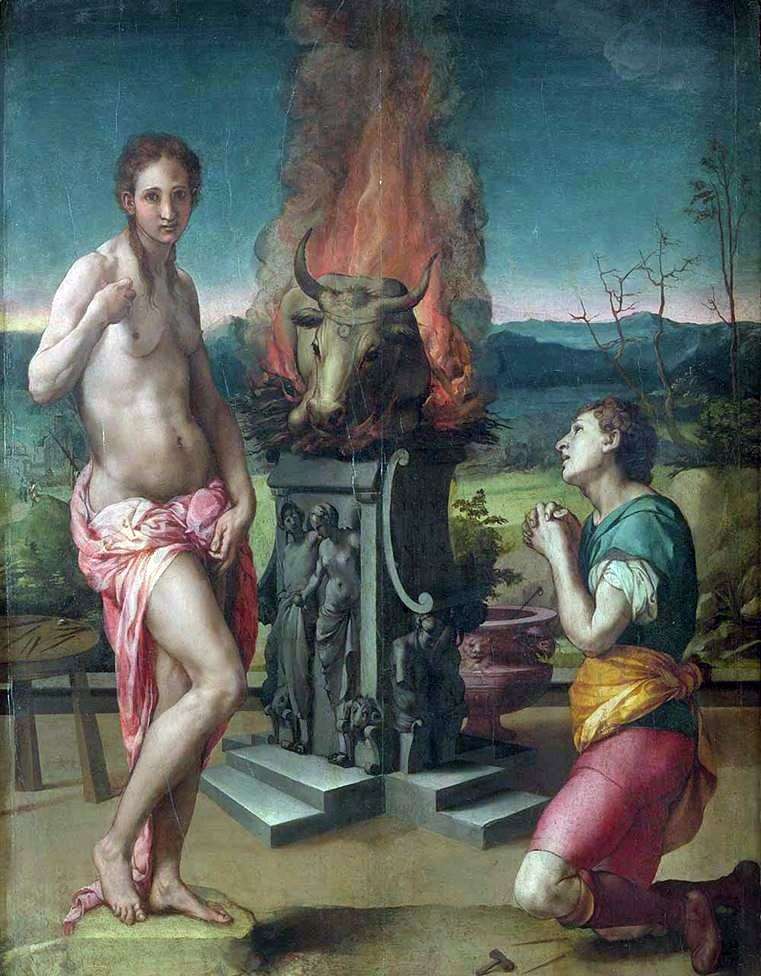
The works of Francois Boucher were highly regarded in Russia by numerous art lovers. He was repeatedly invited to Petersburg, where he could become a teacher of the Academy of Arts. A long journey and an unknown country frightened a spoiled artist.
But one day Bush hesitated: the complication of relations with his Paris colleagues made him think about moving to Russia. In order to place the empress and the academic authorities in his place, in 1766 he sent a gift to the Petersburg Academy of a large decorative painting “Pygmalion and Galatea”, designed to be mounted on a wall or ceiling. To bring her to Petersburg, he entrusted Etienne Falcone, sent to Russia to perform the monument to Peter I.
The gift was accepted graciously, but reconciled with his enemies, Boucher did not come to Petersburg. The painting until 1922 was in the Academy of Arts, then was transferred to the Hermitage. The plot of the work is borrowed from Ovid’s “Metamorphosis.” In his poems he talks about the sculptor Pygmalion, who carved a beautiful girl out of marble and fell in love with her. Venus, having heeded the prayers of Pygmalion, breathed life into the statue he had created. The moment the appearance of the goddess surrounded by the suite and the revival of Galatea portrays Boucher.
The first plan of the painting, the sculptor and the works surrounding him are brightly and materially written. But the artist’s desire to reveal the second, “unrealistic” plan, is felt: the workshop in the depths was filled with silvery clouds; they are seated almost transparent, unearthly Venus. Marble Galatea begins to come to life. Her face turns pink, the disintegration disappears, her arms are about to start… An ancient myth is told by an artist with elegance and mannerism peculiar to a Frenchman of the 18th century.
Bush, who usually wrote his canvases easily and quickly, apparently carefully worked out the composition of this work. It is known that at the sale of the artist’s property, which took place after his death, a preliminary sketch for the Pygmalion prepared by grisaille appeared. The picture of Bushe with its characteristic plot, color and interpretation of images gives an excellent idea of decorative painting of the Rococo style.
 Pygmalion et Galatea – François Boucher
Pygmalion et Galatea – François Boucher Pigmalión y Galatea – Francois Boucher
Pigmalión y Galatea – Francois Boucher Pygmalion and Galatea by Agnolo Bronzino
Pygmalion and Galatea by Agnolo Bronzino The artist in his studio by Francois Boucher
The artist in his studio by Francois Boucher Hercules and Omfala by Francois Boucher
Hercules and Omfala by Francois Boucher Portrait of the artist’s wife Marie-Jeanne Busot by Francois Boucher
Portrait of the artist’s wife Marie-Jeanne Busot by Francois Boucher Diana after bathing by Francois Boucher
Diana after bathing by Francois Boucher The Mill in Sharaton by Francois Boucher
The Mill in Sharaton by Francois Boucher